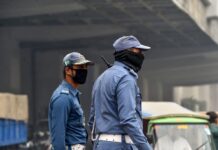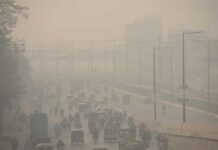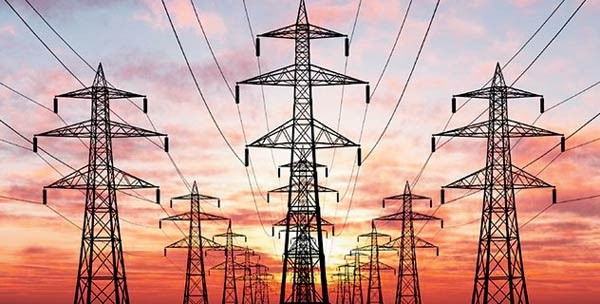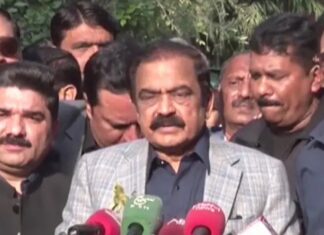When night falls across Pakistan, it doesn’t merely bring darkness—it extends the shadow of an enduring energy crisis that continues to throttle development, deepen economic despair, and ignite social unrest. The flickering bulbs in homes, the halted industrial machines, and the never-ending hum of diesel generators are not just symbols of inconvenience but of a much deeper rot. It is a crisis born not solely from resource scarcity, but from policy inertia, shortsighted governance, and a chronic dependency on imported fossil fuels. Despite abundant sunlight scorching vast stretches of arid land, Pakistan has remained tethered to obsolete and carbon-heavy power solutions—solutions that are not only economically unviable but environmentally disastrous. In an age when the rest of the world is aggressively transitioning to renewable energy sources, Pakistan’s continued reliance on conventional means is not just complacent—it borders on self-sabotage.
Pakistan’s energy conundrum is not just about outages or circular debt—it reflects a profound systemic failure to diversify energy sources, attract sustainable investments, and prioritize public welfare. The country’s total installed capacity exceeds 44,000 MW, yet large swaths of the population experience routine blackouts. With a circular debt ballooning to over PKR 2.6 trillion and the lion’s share of electricity generation still reliant on imported oil, gas, and coal, the model is unsustainable. Power tariffs continue to rise under IMF pressure, burdening both industries and households. Meanwhile, clean and affordable energy alternatives like solar remain drastically underexplored. Pakistan receives average solar irradiance of 5.3 kWh/m²/day and has over 300 sunny days annually—yet solar energy contributes less than 2% to the national grid. Studies and international energy observers alike have stressed the need for urgent reforms and innovative financing models to overcome this impasse.
In stark contrast, neighboring India has demonstrated both vision and execution in its energy planning. The Bhadla Solar Park in Rajasthan, a testament to that vision, now stands as the world’s largest solar energy installation. Spread over a sun-baked desert in the Phalodi tehsil of Jodhpur, the park spans more than 14,000 acres and has an installed capacity of 2,245 megawatts (MW)—enough to power nearly 2 million homes. With solar irradiation levels between 6.0 to 7.5 kWh/m²/day and 320 sunny days a year, Bhadla was not just a random desert site—it was a strategic choice rooted in data, policy, and foresight. The initiative began in 2015 and rapidly scaled through multiple phases, reflecting what can be achieved when governments, private entities, and international actors collaborate around a shared vision of sustainability. According to the International Energy Agency (IEA), projects like Bhadla are critical in helping India reduce its carbon emissions by over 4 million tons annually while also reducing dependency on coal.
The Bhadla model is a masterclass in leveraging smart policy and international support. Spearheaded by the Rajasthan Renewable Energy Corporation Ltd (RRECL) and developed through public-private partnerships—including giants like Adani Renewable Energy and Saurya Urja Company—the park reflects how governance can enable markets to flourish. India also benefited from global climate finance tools, including the Clean Technology Fund and adaptation funds, easing capital flow into green infrastructure. Moreover, India’s proactive engagement with international climate frameworks such as the Paris Agreement and the International Solar Alliance enabled it to integrate climate financing provisions with strategic planning. In effect, the park didn’t just sprout from the ground—it was cultivated through policy alignment, stakeholder trust, and visionary investment.
This juxtaposition with Pakistan is telling—and troubling. Consider the Quaid-e-Azam Solar Park in Bahawalpur, inaugurated in 2015 with a capacity of 100 MW under Phase I. Initially hailed as a milestone in clean energy, it quickly fell prey to bureaucratic delays, allegations of cost inflation, and limited expansion. The subsequent phases never fully materialized. Technical inefficiencies, lack of maintenance, and absence of competitive bidding marred its potential. Unlike Bhadla, the Quaid Park failed to harness private capital or international climate finance atscale, rendering it an example of how good intentions without structural planning can lead to mediocrity. Where India converted its deserts into engines of energy security, Pakistan allowed its initiatives to wither under administrative malaise.
What makes this inaction more alarming is the rapidly changing environmental context. Pakistan is among the top ten countries most vulnerable to climate change, as ranked by the Global Climate Risk Index 2021. From glacial lake outburst floods (GLOFs) in the north to desertification in the south, the nation faces multifaceted threats. Ironically, these very threats make the case for renewables stronger. Solar energy is not only abundant but non-polluting and less water-intensive—an important factor in a water-stressed country. Additionally, as per the International Renewable Energy Agency (IRENA), Pakistan holds the technical potential to generate over 50,000 MW from solar energy alone. Investing in solar is thus both an environmental obligation and an economic lifeline.
Pakistan’s energy conundrum is not just about outages or circular debt—it reflects a profound systemic failure to diversify energy sources, attract sustainable investments, and prioritize public welfare. The country’s total installed capacity exceeds 44,000 MW, yet large swaths of the population experience routine blackouts. With a circular debt ballooning to over PKR 2.6 trillion and the lion’s share of electricity generation still reliant on imported oil, gas, and coal, the model is unsustainable.
Moreover, the world’s climate regime is evolving toward carbon accountability and clean energy prioritization. Countries that fail to decarbonize risk trade sanctions, carbon border adjustments, and diplomatic isolation. Pakistan’s industries—particularly textiles and manufacturing—already suffer under inconsistent power supply and high tariffs. Without integrating solar and other renewables, these sectors will struggle to remain competitive globally. Energy transition is now not merely about decarbonization—it is about economic positioning, technological advancement, and geopolitical relevance. Critics and think tanks have consistently pointed to Pakistan’s need to develop bankable solar projects, create regulatory ease, and initiate large-scale grid integration efforts.
This urgency also finds a lifeline in global climate finance. Pakistan, despite its vulnerabilities, has managed to secure support from platforms like the Green Climate Fund (GCF), which has approved around $304 million for ten key projects. These focus on distributed solar energy, resilience in urban water management, and sustainable agriculture. For example, GCF’s SAP024 project aims to deploy 43 MW of distributed solar power for households, agribusinesses, and SMEs, addressing energy access and affordability (GCF). Similarly, the Adaptation Fund has provided $10 million for the SAFER initiative to address climate vulnerabilities in the Indus Basin (ICIMOD). These international engagements demonstrate the viability of mobilizing climate capital—provided Pakistan aligns its policies and institutions to absorb and utilize such funds efficiently.Furthermore, Pakistan’s consistent participation in Conferences of the Parties (COPs) offers a platform for deeper international cooperation. At COP29, Pakistan’s delegation emphasized the disproportionate climate burden it bears despite contributing less than 1% to global emissions.
The country’s updated Nationally Determined Contributions (NDCs) aim for 60% renewable energy in its power mix by 2030—35% of which is conditional upon international assistance (UNFCCC). The Acumen Climate Action Pakistan Fund, launched with $3 million in grants and $25 million in equity, aims to scale clean energy access for underserved populations. These financial tools and frameworks indicate a clear opportunity: with transparency, planning, and governance, Pakistan can unlock billions in climate finance to drive a solar revolution akin to India’s Bhadla model.
As the world marches toward decarbonization and energy equity, Pakistan must choose whether to be a participant or a bystander. The Bhadla Solar Park is not merely a technological feat—it is a symbol of resolve, cooperation, and forward-thinking governance. It tells a story of how environmental challenges can be turned into economic opportunities when vision leads the way.
Pakistan, with its sunlit plains and climate-vulnerable communities, has both the need and the means to follow suit. The question is no longer whether Pakistan can afford to invest in solar—but whether it can afford not to.





















